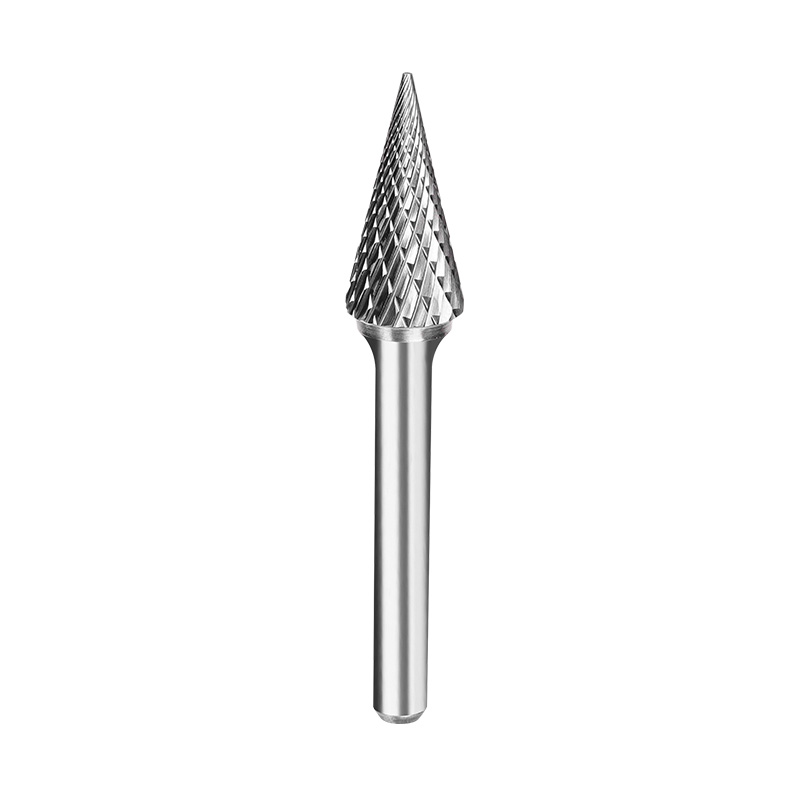In the metalworking industry, the use of aluminum has become increasingly prevalent due to its lightweight and high strength-to-weight ratio. However, working with aluminum requires specialized tools, such as aluminum burr bits, to ensure precision and efficiency.

Aluminum burr bits are specifically designed for working with aluminum and other non-ferrous metals. These carbide burr for aluminum tools are made from high-quality carbide material, which provides exceptional durability and longevity. The unique geometry of the aluminum burr bit allows for smooth and precise cutting, reducing the risk of material deformation.
Proper maintenance of your aluminum burr bits is crucial for several reasons. First, it extends the life of the tool, reducing the need for frequent replacements and associated costs. Second, well-maintained tools ensure consistent quality in your work, which is essential for meeting industry standards. Lastly, maintaining your carbide burr for aluminum bits can help prevent accidents and ensure operator safety.
Step-by-Step Guide to Maintaining Your Aluminum Burr Bits
1. Cleaning: After each use, clean your aluminum burr bits thoroughly to remove any metal shavings or debris. This can be done using a soft brush and a suitable cleaning solution.
2. Inspection: Regularly inspect your carbide burr for aluminum for any signs of wear or damage. Look for chipped or dull edges, which can affect the cutting performance.
3. Storage: Store your rotary burr set for metal in a dry and clean environment to prevent rust or corrosion. Keep the bits organized to avoid damage from mishandling.
4. Lubrication: When working with aluminum, use a cutting fluid to reduce heat and friction. This not only prolongs the life of your aluminum burr bits but also improves the quality of the cut.
5. Handling: Always handle your carbide burr for aluminum bits with care to avoid dropping or misaligning them, which can cause damage.
While carbide burr bits are known for their durability, they will eventually need sharpening to maintain their cutting edge. Here's how to sharpen your aluminum burr bits effectively:
1. Assess the Need: Determine if your aluminum burr bit actually needs sharpening. If the edges are noticeably dull or if the cutting performance has decreased, it's time to sharpen.
2. Use a Sharpening Stone: A diamond or ceramic sharpening stone is ideal for sharpening carbide burr for aluminum bits. Hold the bit at the correct angle and gently slide it across the stone, maintaining even pressure.
3. Consistent Motion: Ensure that you use a consistent back-and-forth motion when sharpening to avoid creating an uneven edge.
4. Multiple Passes: It's better to make multiple light passes rather than a few heavy ones. This prevents over-sharpening and potential damage to the bit.
5. Finishing Touches: After sharpening, use a honing rod or a similar tool to realign the edge of the aluminum burr bit. This step is crucial for maintaining the precision of the cutting edge.
6. Test the Sharpness: Once sharpened, test the aluminum burr bit on a scrap piece of aluminum to ensure that it cuts smoothly and efficiently.
Maintaining and sharpening your aluminum burr bits is an essential part of any metalworker's toolkit. By following the steps outlined in this guide, you can extend the life of your rotary burr set for metal, improve the quality of your work, and ensure the safety of your operations. Remember, a well-maintained carbide burr for aluminum is a reliable partner in your pursuit of precision and advanced in metalworking.